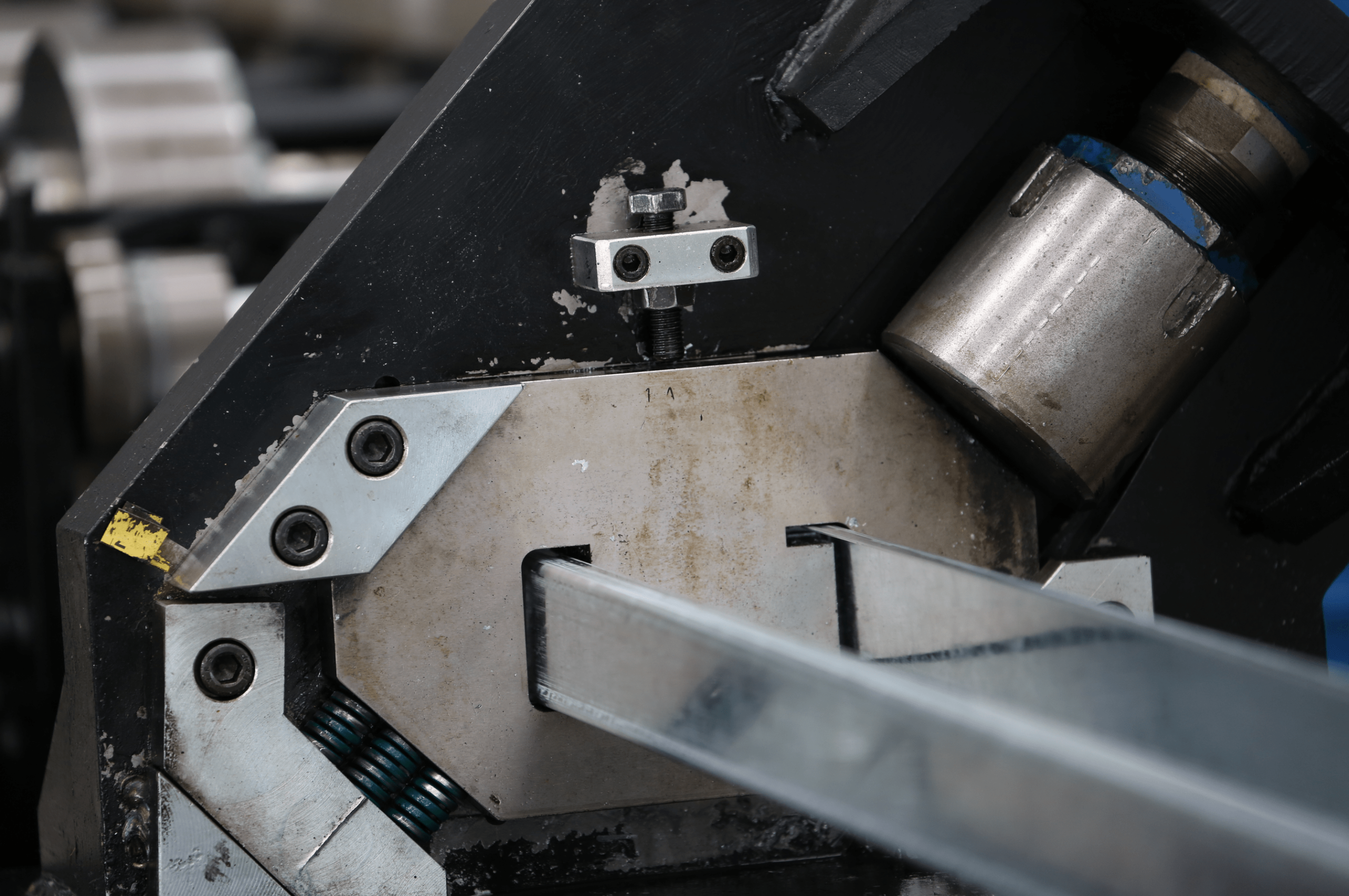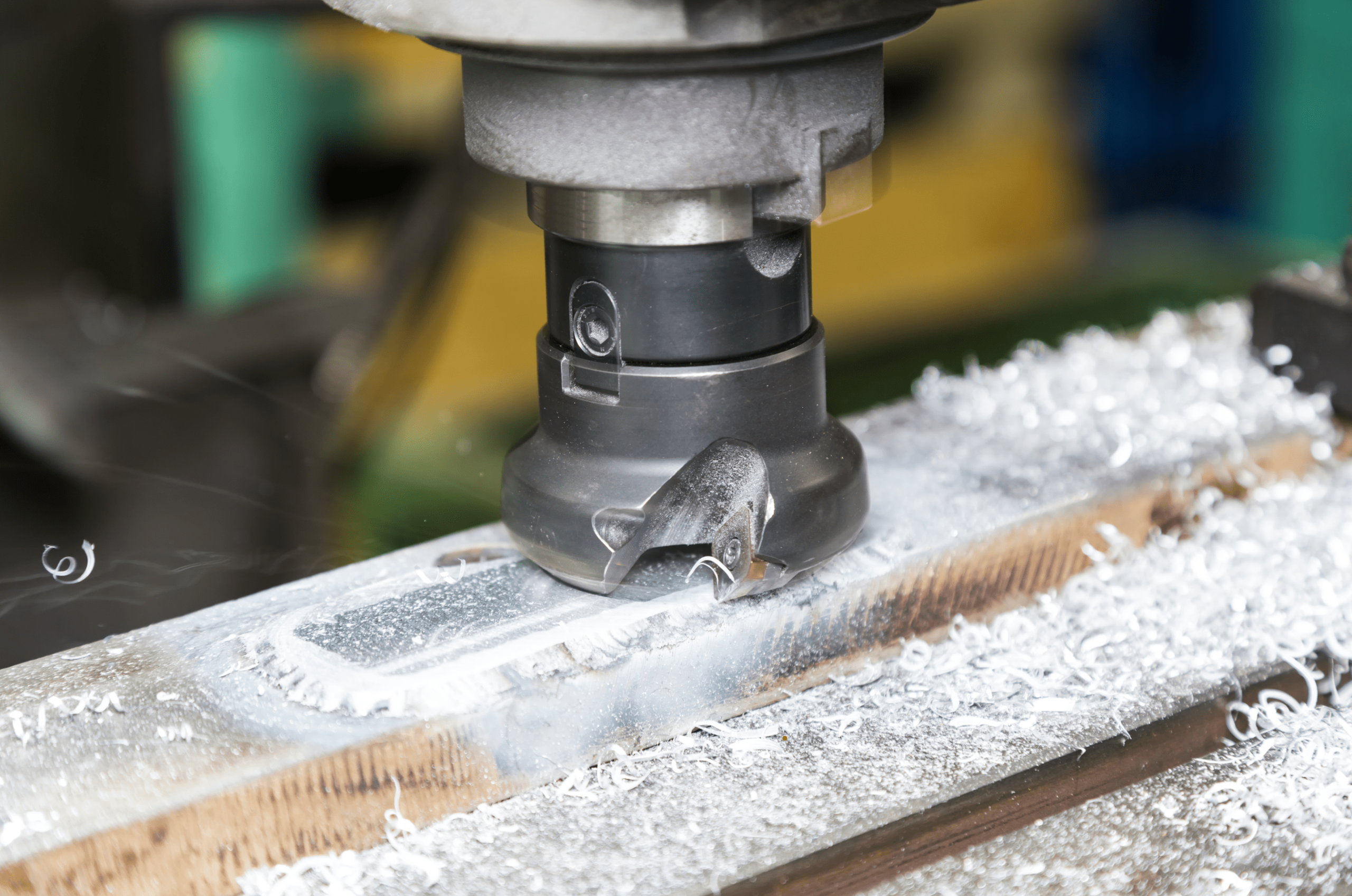What is Mill Finish
In most manufacturing operations, the last process a substrate goes through before the surface finish is milling. During this step, the overall rough shape of the component is created, leaving a rough and coarse texture to the workpiece. This is most common for aluminum and most metals but is also a standard process for other materials used in subtractive manufacturing.
This rough and unpolished texture is usually referred to as a mill finish. This type of surface texture lacks brightness and has low reflectivity. It can also contain some additional components, like trace amounts of mill oil, or oxidation spots on the outer layer. Pieces with such a surface are usually considered raw or unfinished, requiring a surface processing step to create the final appearance of the component. Essentially, a mill finish is almost a requirement for surface finishing processes, providing the accurate measurements, and precise angles of a component before finishing touches.
The Milling Process
Milling is a machining process that relies on rotary cutters. With each pass along the material’s surface, the rotary cutters remove material from the workpiece, shaving off chips, or swarf. The speed and feed rate of the cutter depend on the type of material. Usually, harder metals like aluminum or steel usually require slower feed rates than softer metals like copper.
There are two distinct types of milling processes. Face milling consists of making milling cuts using the end corner of the cutters along the flat surface of the workpiece. Whereas peripheral milling differs in making the cuts along the circumference of the cutter. This method is mostly applied to make deep slots and threads, as the blades of the cutter remove bigger chunks of material from the workpiece. This is the cutting process that gives the metal surface its mill finish. The type of rotary cutters and the size of the blades are determining factors of the mill finish’s minute details. As the cutters can often go in different variations of movement, from trochoidal marks to curvilinear movements, this gives the metal surface its distinct grainy and rough surface, marked by cuts and scratches.
The Extrusion Process

Extrusion is another process of producing raw metal parts, often with a rough surface finish that can be described as a mill finish. Extrusion is essentially a process that pushes metal through cross-sectional stamping or casting dies. This technique is mostly applied to aluminum and steel, as well as softer metals, either in cold or hot temperatures, and is applied to obtain complex cross-sectional profiles that are not achievable through regular milling processes.
This method is characterized by the use of compressive and shear stresses alone to produce the shape of metal bars. This method gives an arguably better surface effect than regular milling, although extruded aluminum and metals will usually exhibit more or less similar roughness and texture. In Extrusion processes, metal billets will often be wire brushed, machined, or chemically cleaned in order to achieve a better surface finish effect, while also providing freedom of form during the design process.
Importance Of Mill Finish Metal
Although a mill finish is the texture of metal, or material in general, as it leaves the mill; an unfinished appearance, it is often very sought after by manufacturers and builders. Not only is it the standard form of raw metals in several industries, but it also has a greater degree of customization of the part and the final appearance of the product. In most industrial uses metal parts or bars are processed into a coherent component, or final product comprising different pieces. Likewise, the optimal surface finish is determined by the final usage of the product, among other factors, which significantly guide the sealing and coating of the material. This arrangement method allows for a consistent appearance.
Characteristics Of a Mill Finish

As much as a mill finish is a standard, slight differences are present between the different metals. The most common mill finish metal is aluminum. At this state, mill finish aluminum will usually have a slight and thin film of oxide, which is common for both extruded and rolled aluminum. Oxidation is a common trait in most mill-finished metals, which will later be removed through a chemical process. This is the case also for stainless steel, which usually exits the mill with very low luster, sometimes even a dark coloring on the surface. Rolled sheet metal will usually have the thinnest oxidation coating after exiting the mill.
The resulting surface finish of metal parts will greatly vary from one mill to another, and also from one stock of metal parts, produced at the same time, to another. The process itself, be it milling or extrusion will greatly affect the characteristics of the metal bars’ surface finish. For example, in rolling mills, the metal bars will usually exhibit a dark, grainy, and non-reflective finish, and surface oxidation from being hot worked. Unlike extrusion mills, where metal bars will exhibit die marks along the length of the stock. Recent developments in manufacturing enable mills to greatly enhance the surface finish of their raw metals. Adding polishing rollers can add brightness and a finer finish to the metal’s surface.
The Annealing Process
There are increasingly more rolling mills that follow their general process with an annealing stage in order to give their produced metal parts a matte finish. This is still a raw and unfinished surface but gives a better visual appeal, and a more uniform finish, which is efficient in manufacturing operations. This process usually takes the form of heating the metal to above its recrystallization temperature and then cooling, either in still air or by quenching in water. Thereby, several physical and chemical properties are altered, making the metal more malleable and workable.
The exact parameters of the process usually depend on the type of material. For most ferrous metals like iron and steel, the process includes heating until the material glows white. The temperature is maintained for a short and then the metal is left to cool in still air (usually at room temperature). Brass and copper on the other hand can also be cooled quickly by quenching in water. However, aluminum is a non-heat-treatable metal and can be annealed by torching.
This general process not only does it make the metal more ductile and workable, but it uniforms the surface and removes many of the cracks and cutting spots that may present on the surface, and often produces a matte finish.
Advantages and Disadvantages
As the mill finish is not a surface finish per se, rather the raw state of the metal’s surface before the finish. Many mills and manufacturers prefer offering anodized metal instead of mill finished bars. This is largely due to the more uniform surface finish of anodized metals and strengthened conditions as they can withstand weather oxidation and UV lights.
Mill finished metal parts will always exhibit milling or cutting lines and marks. The more prominent ones can often remain evident even after the final installation of the project. For many uses, the regular mill finish is not optimal. For example in many architectural uses, an anodized finish is preferred in the production of metal bars, as it’s more uniform in surface, which can complement the appearance of other metals used in construction and architecture.
Although a mill finish is the most common finish that metal is supplied in, an anodized finish is more sought after for raw metal bars, mainly because of the corrosion resistance that mill finishes don’t provide. This is more common in regions where the natural weather and environment can deteriorate metals (humidity or exposure to water). In most dry weathered regions, a mill finish is a standard.
Conclusion
The supply of raw metal bars or billets, as well as other materials, often relies on a uniform standard. This is established in order to provide the freedom required during the design process, as well as a reliable model and measurement to consistently mill the material in a form familiar to most manufacturing operations and industries. The surface texture of a mill finish is recognizable by most manufacturers. With the recent developments in technology and industry, the potential of milling operations, in terms of surface enhancement will only grow.



